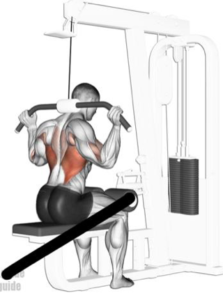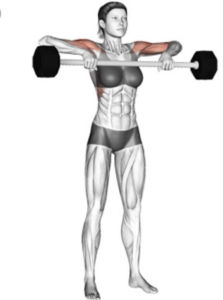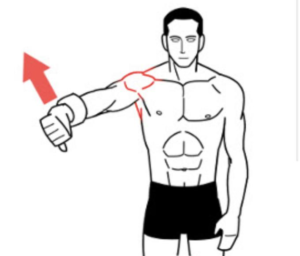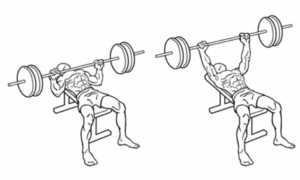Don’t let the shoulder destroy the neck. An exercise that puts the shoulder at a bio-mechanical disadvantage will likely cause you to compensate by using faulty mechanics and jam the neck joints. At CSC+M, our midtown chiropractors consistently see patients who’ve injured themselves at the gym while weight training.
After a shoulder or neck injury, you should seriously consider the following recommendations.CSC+M takes an integrative approach to healthcare—with physical therapists in Flatiron, and chiropractors at our midtown clinic, we treat a wide array of conditions related to weight training. You can learn more about common shoulder injuries we treat, as well as head and neck injuries treated at our Midtown office.
No bench with straight bar
A straight bar allows mechanical advantage to the Pectoralis muscle group without working the rotator cuff or stabilization muscles of the shoulder. Use dumbbells to replace the bar to work the “weak link” rotator cuff and proprioception.
No lat pulls behind neck
This is the “at risk” position for the discs of the cervical spine and impingement position for the shoulder. Replace w/ front pull(bring chest to bar) or reverse grips, Lat pulls behind the neck cause shoulder instability and neck pain.
 No upright rows
No upright rows
This motion causes shoulder impingement, normal shoulder motion is to externally rotate and abduct. The upright row is likened to slamming your finger in a door.
 No“empty can” exercises
No“empty can” exercises
Lifting weights in the “empty can” position(thumb down) causes impingement. Replace with “full can” (thumb up) exercises, also add sidlying lateral raise. Never lift more than 5lbs with these exercises, and stay in the scapular plane(20-30 degrees of abduction and not more than 120 of flexion). These muscles function as endurance stabilizers. Work up to 30 reps.
 Avoid Overhead Presses with a Straight Bar
Avoid Overhead Presses with a Straight Bar
Again this is the “at risk” position for anterior shoulder instability and impingement. Weigh the risk versus benefit of doing this motion. An alternative is a bottoms up isometric kettlebell hold.
Remember: Avoid the “at risk” position to reduce shoulder-related injuries.
 Train the Weak Link
Train the Weak Link
Realistic goals and expectations reduce injuries Safe training keeps you off the DL(Disabled List)

